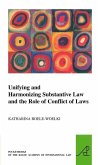The Autonomy and Jurisdiction of the Sea: Uncovering the Secrets of Flags, Zones, and the Limits of Maritime Power If the sea is the heartbeat of the Earth, then flags are the stars waving on its waves, zones are the lines drawn on the map of its vastness, and the limits of maritime power are the threshold to its depths. This book opens a window into this mysterious world, where the rights of nations and the freedom of the oceans collide. First, let us start with the most basic question: what is autonomy? In simple terms, autonomy is the right to have full control and governance over an area. When we talk about the sea, this gives coastal nations special rights over the water area near their coast. These rights extend to the water above, the surface, and the underground resources below. Now, let us look at the invisible line where a nation's land ends and the sea begins. This is called the baseline. From this line, we determine the beginning and boundaries of the various maritime zones. The most important of these zones are: · Territorial sea: This is the area of water that extends 12 nautical miles (22.2 kilometers) from the baseline. Coastal nations have full sovereignty over this area, including the right to control navigation, fishing, and resource extraction. · Continental shelf: This is the area of seabed and subsoil that extends beyond the territorial sea to a depth of 200 meters (656 feet) or to the edge of the continental margin. Coastal nations have exclusive rights to explore and exploit the natural resources of this area. · Exclusive economic zone (EEZ): This is the area of water that extends 200 nautical miles (370 kilometers) from the baseline. Coastal nations have sovereign rights to explore and exploit the natural resources of this area, including fish, oil, and gas. They also have jurisdiction over environmental protection and marine scientific research. · High seas: This is the area of water that lies beyond the EEZs of all nations. It is considered to be the common heritage of all humanity, and no nation has sovereign rights over it. However, all nations have the right to use the high seas for peaceful purposes, such as navigation, fishing, and scientific research.







